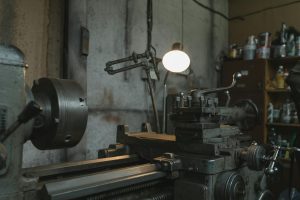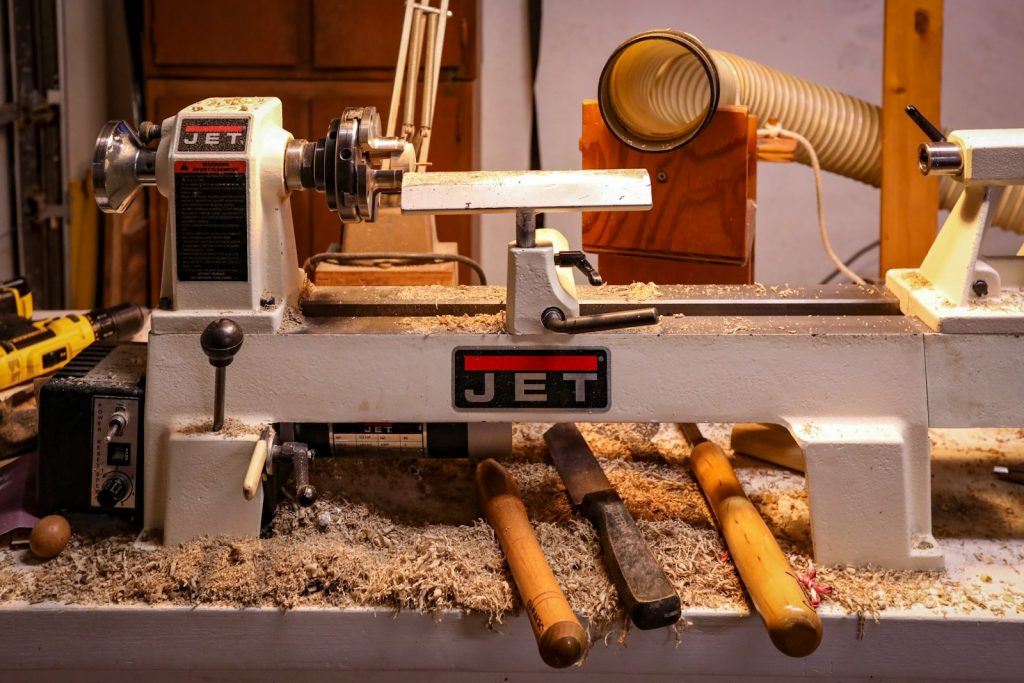How to Choose the Right Lathe Machine for Your Workshop
Choosing the right lathe machine for your workshop can make a significant difference in your productivity, efficiency, and the quality of your projects. Whether you’re a hobbyist or a professional machinist, finding the perfect lathe depends on a variety of factors, including the type of work you do, your budget, and the space you have available. In this post, we’ll guide you through the key considerations for selecting the right lathe machine for your needs.

1. Determine the Type of Lathe You Need
There are various types of lathe machines, each designed for specific tasks and materials. The most common types include:
- Wood Lathe: Primarily used for woodworking projects, such as turning bowls, pens, and furniture legs.
- Metal Lathe: Designed for working with metals, making it ideal for precision work on materials like steel, brass, or aluminum.
- CNC Lathe: A computer-controlled machine perfect for high-precision, high-volume production, commonly used in industrial settings.
- Mini Lathe: A compact version of the standard lathe, suitable for smaller projects and tight spaces.
Choosing the right type depends on the materials you plan to work with and the complexity of your projects.
2. Consider the Size of the Lathe
The size of your lathe machine should match the scale of the projects you plan to undertake.
- Swing Over Bed: This measurement tells you the maximum diameter of the material you can turn. For smaller, intricate work, a mini lathe with a smaller swing is ideal, while larger projects require a lathe with a wider swing.
- Distance Between Centers: This measures the maximum length of the material you can turn. Longer distances are essential for projects like turning furniture legs or long metal shafts.
Tip: Choose a lathe size that can handle your largest projects without taking up unnecessary space in your workshop.
3. Evaluate the Lathe’s Power
Power is an essential factor to consider, especially if you’re working with tougher materials.
- Motor Power: Higher horsepower motors are ideal for turning harder materials, such as metals, without straining the machine.
- Speed Control: Look for a lathe with variable speed control to adjust the turning speed based on the material and operation, offering better control and precision.
Tip: For beginners or those working on small projects, a lathe with a 1 HP motor should suffice, while larger, more complex projects may require 2 HP or more.
4. Manual vs. CNC Lathes
When deciding between a manual and a CNC lathe, consider your experience level and the complexity of your projects.
- Manual Lathe: Best for hobbyists and those who enjoy hands-on control over their projects. These lathes are great for small batches and custom pieces.
- CNC Lathe: Perfect for high-volume production and highly detailed designs that require precision. CNC lathes are fully automated and programmed via software, making them suitable for professional use.
5. Budget Considerations
Your budget will play a significant role in determining the type of lathe machine you can purchase.
- Entry-Level Lathes: For beginners or those on a budget, mini lathes or basic wood/metal lathes are affordable options. They typically have fewer features but still offer excellent functionality for smaller projects.
- Mid-Range Lathes: These lathes offer more features, such as variable speed control, sturdier construction, and larger capacity. They’re ideal for intermediate users or professionals working on moderately complex projects.
- High-End Lathes: Industrial-grade lathes, particularly CNC lathes, can be more expensive but are well-suited for high-volume, precise work.
Tip: Balance your budget with the quality of the machine, ensuring you invest in a lathe that meets both your project requirements and long-term goals.
6. Assess the Available Features
Lathes come with various features that enhance their functionality, such as:
- Tool Rest and Carriage: A stable tool rest ensures better control, while the carriage’s ease of movement affects the machine’s precision.
- Tailstock: For turning between centers, a strong and reliable tailstock is essential for holding workpieces securely.
- Chuck: Check the type of chuck the lathe uses. A 3-jaw chuck is common for round workpieces, while a 4-jaw chuck allows more versatility for irregularly shaped materials.
- Digital Readouts: CNC lathes or advanced manual lathes may come with digital readouts for more precise measurements and settings.
7. Space and Setup Requirements
Before purchasing a lathe, make sure you have enough space in your workshop for both the machine and any additional accessories, such as stands, tool racks, or dust extraction systems (for woodworking lathes).
- Footprint: Measure the available space and choose a lathe that fits comfortably, leaving room for operation and maintenance.
- Weight: Heavier lathes tend to be more stable, but you may need assistance with installation and transportation.
Conclusion
Choosing the right lathe machine is a critical decision that depends on your specific needs, budget, and workspace. By considering factors such as the type of lathe, size, power, and features, you can ensure that you select the machine that will help you tackle your projects efficiently and accurately. Whether you’re a beginner or a seasoned machinist, the right lathe will become a valuable tool in your workshop for years to come.


